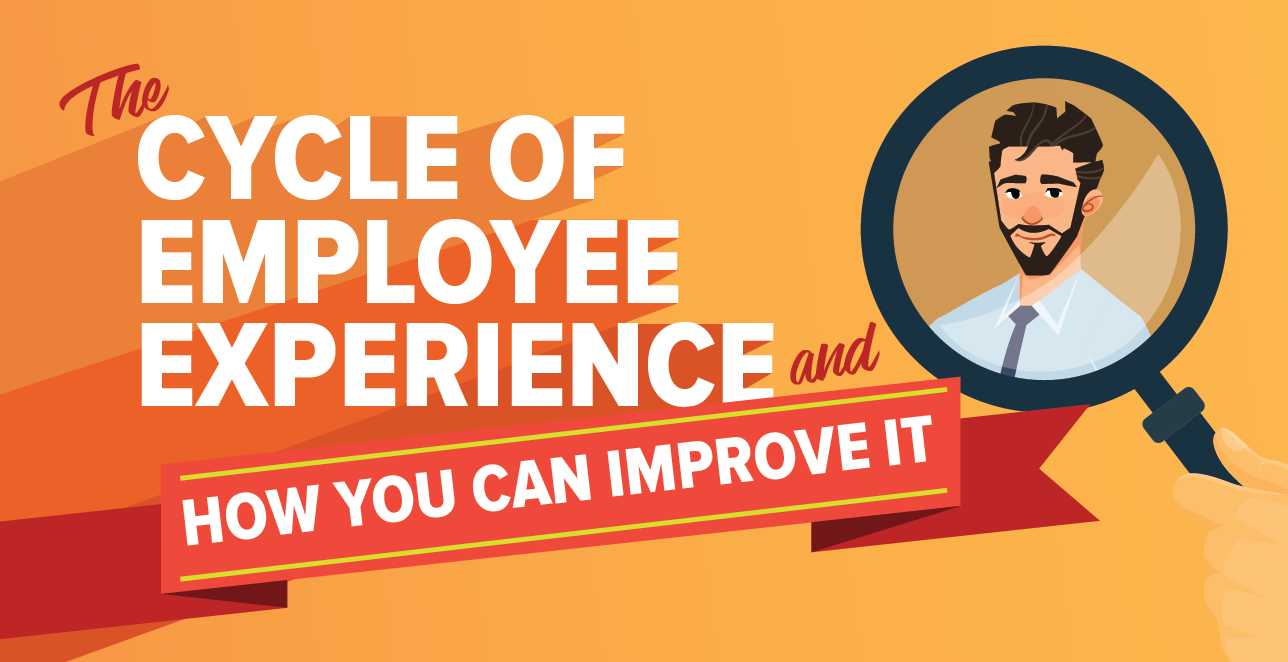The cycle of employee experience identifies the different stages that someone goes through in a company and the role that HR plays in improving their progress in the process.
Managing the cycle is crucial for HR professionals and recruitment consultants because all corporations need employees—assets who bring in the most benefits for the growth of a company.
When there’s a life cycle program, employees experience a consistent series of steps through their career while enabling HR to collect and analyze data that can help improve HR processes and methods.
Each stage brings challenges to both the company and employees, but the fact remains that it is vital for HR to improve it to offer a relevant experience to every employee or candidate.
I. Attraction
Attraction is the first step to getting the attention of your prospect employees, and this is made possible by establishing your employer brand.
As defined by author Brett Minchington, employer brand is the image of an organization as a ‘great place to work’ in the mind of current employees, key stakeholders, active and passive candidates, clients, and customers.
When your company has the characteristics applicants search for, you entice and keep great talents which are necessary for growth.
Here are some ways you can do this:
1. Be well-known in the industry
Build your company profile by letting managers and employees attend seminars or conferences and providing them the opportunity to speak on such events or be a resource person for stories to build them up as an industry expert.
2. Have a great culture
Company culture pertains to the personality of the organization that is defined by the work environment, mission, value, ethics, expectations, and goals.
Naturally, employees would prefer to enjoy working in a place where their needs are addressed consistently, thus making them happy to stick around.
Be proud of your great company culture and share insights of it through social media
3. Make compensation and benefits appealing
Give your employees the right compensation because that can help you build up your reputation among your prospects. Make softer benefits equally appealing like offering free lunches or giving birthday leave.
II. Recruitment
When positions are left vacant or new ones are created, HR needs to fill those openings. If a prospect is attracted enough to the company, recruiters won’t have a hard time finding applicants for the open positions. In this stage, it is crucial to recruit top talents through a candidate-focused process.
The right hires play a critical role not only because their performance can result in company growth, but also because they define productivity and turnover of employees. It’s a fundamental process that also impacts employee experience, and here are some things to note about recruitment.
1. Utilize employee referrals
According to a TLNT research, referred employees have a 45% retention rate after two years, making it an effective recruitment method that also proves that existing employees are the best ambassadors for a company.
2. Experiment on different recruitment platforms
Aside from job boards, social media, and traditional platforms, find out where else you can find your ideal candidates like an industry event.
3. Be specific with qualifications
Vague job descriptions cast a wide net and are not effective all the time. It may be better to list down the prerequisites that let you find the talent that will address your company’s needs. Specific qualifications will save both the candidate and employer’s time.
III. Onboarding/Education
This third critical stage allows new hires to adjust to the different aspects of their new job. Here, they learn the knowledge, skills, attitudes, and behaviors required to perform effectively.
When new hires are welcomed into the team and prepared as soon as possible, the faster they can also contribute to the organization. On the contrary, companies who do not plan onboarding lose 17% of their new hires within the first three months. Onboarding isn’t just about them signing the contract.
Here are some ways you can come up with an effective onboarding program:
1. Have a detailed job description
A job description should include their duties and required experience and skills. They should be trained until they fully understand their duties and responsibilities.
2. Communicate the company values and vision
Discuss with them your company’s values, vision, and culture, and what it all means for them as an employee.
3. Express your expectations clearly
A detailed role description will already detail what to expect from the new hires, but they should be able to understand why they are essential especially for the company’s success.
4. Follow up regularly
Ask new hires regularly for updates on what they have learned so far, as well as any challenges they may be facing.
IV. Development/Motivation/Engagement
Through employee development, you can engage and motivate them further to be better employees. Encourage professional development to learn new skills and help provide a future career path.
A go2HR survey showed that 40% of employees who receive poor job training leave after the first year. In addition, turnover is highest in the first 90 days often due to a lack of motivation, making it imperative for leaders to build bonds with their employees during these days.
Development means the difference between resignation and retainment, and you can do this with the following:
1. Encourage your employees to be responsible
You can also help them with their development by letting them do it together or providing a template to complete their own plan.
2. Identify their skills and knowledge
By doing these with the employees, they get to know which skills they need to develop further. Having a manager act as a mentor can encourage openness.
3. Encourage external learning
Send them out to relevant conferences, seminars, and other opportunities outside of the office to learn.
4. Recognize and reward them
Show appreciation to those who made efforts to develop themselves to better contribute to your business’ success. Offer benefits and bonuses, as these can also motivate them to do better.
V. Evaluation
Supervisors or managers are tasked with evaluating their employees’ performance through specific metrics. This helps determine the progress of employees and if they are the right people for the job.
Keep the following in mind when evaluating:
- Recognize a good job instead of always criticizing mistakes
- Base your evaluation on facts, not feelings
- Train them to help reach their goals and for their own professional development
VI. Retention
Once the employees pass their evaluation, you should now focus on how to keep them for good (or at least until they move on to the last stage of the cycle). It’s time to ensure that they are happy but still challenged with their roles. It’s hard to retain employees when you have a bad company culture, and this can, in turn, increase your company’s employee turnover.
Improve your employee retention by doing the following:
1. Build a great relationship with your team
Foster an honest and respectful relationship with everyone on the team.
2. Communicate your team mission and aspirations clearly
Ensure that the team understands and are committed to the same mission as that of the company. Remind them where they belong within the company and how they help with its progress.
3. Get their feedback and check their morale
Find ways to discuss with the team how they are going and what issues they are facing if there are any. A survey tool can be helpful in getting their feedback about the company to measure your team’s morale.
4. Understand their motivation
Not everyone on the team has the same drive, and each has their own personality. Be familiar with what motivates your employees so that you can communicate and reward them appropriately.
VII. Offboarding/Separation
All good things must come to an end, and it’s the same for employment. Workers may leave due to retirement, family, or personal reasons, or a new job.
Parting is never easy, but it’s just as important to have a proper separation process as it is to have an onboarding one.
1. Dig deep as to why they are leaving
There may be more significant reasons behind the resignation than what they have told you.
2. “One door closes; another opens”
Know that you can find a replacement for the resigning employee.
3. Ask for honest feedback
Resigned employees are more open to giving their honest feedback about the organization.
4. “Life goes on”
It’s common for the team morale to be down when someone decides to leave, so it’s important to reaffirm your commitment to them and reassure that the team will recover and grow from this event.
Companies need to plan and understand the employee journey. Employees, meanwhile, should provide feedback depending on their stage in the cycle.
Listen to these comments and suggestions and use these to gain insights on how you can improve your life cycle program. This will also help you engage with your employees and retain them for years.















